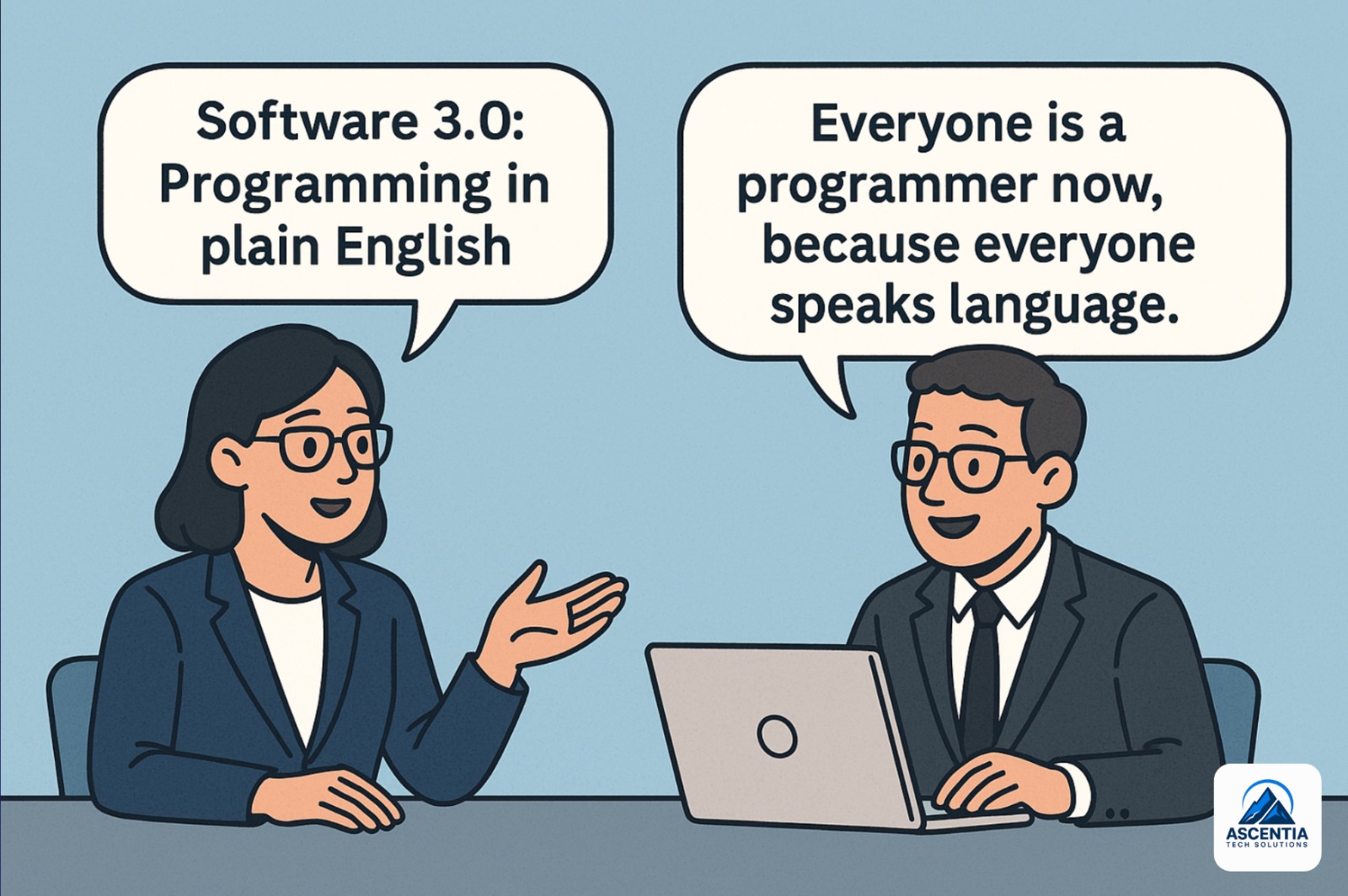For decades, if you wanted a computer to do something new, you had to know how to code. Today, that barrier is falling fast. We’re stepping into a world where you can program using plain English — and it’s not a gimmick. It’s a fundamental shift.
At Ascentia Tech Solutions, we help small businesses and ministries take advantage of this new era, even without technical teams. Because what’s happening isn’t just for developers. It’s for everyone.
What This Post Is About
We’re going to explore a mind-blowing idea from AI expert Andrej Karpathy: that we’re now in the third major era of software. Understanding this shift can help you work smarter, build faster, and get more done with less.
We’ll look at:
- How Software 1.0, 2.0, and 3.0 differ
- Why plain English is now a programming language
- How you can start using this in your own work (even if you’re not technical)
Let’s dig in.
What’s the problem?
Most people think AI tools are magic.
But when they try them, the results are mixed. Sometimes the output is great. Other times, it feels like the tool didn’t understand what you wanted. That’s frustrating.
The issue isn’t the tool. It’s how we think about “programming” it.
What we tried (or what works)
Andrej Karpathy describes three eras of software:
Software 1.0: You write code. The computer follows your instructions. Think C++, Java, Python.
Software 2.0: You train a neural network. You don’t write explicit logic. You give it examples (data), and it figures out patterns. Think image recognition or voice assistants.
Software 3.0: You write prompts in natural language. Large Language Models (LLMs) like GPT-4 interpret your intent and produce results. You’re still “programming” — but with English instead of code.
Karpathy calls it: “Everyone is a programmer now, because everyone speaks language.”
So instead of building a webpage with HTML and CSS, you might just type:
“Create a landing page for a summer camp with a fun, energetic tone. Include a signup button.”
And boom. The AI does it.
What surprised us (or key insight)
This changes everything.
We don’t need to teach every staff member to code.
We can:
- Generate social media posts from sermon transcripts
- Translate newsletters into multiple languages instantly
- Summarize feedback from forms or surveys
- Draft grant proposals from rough notes
And all of this is possible with clear prompts. The better you describe what you want, the better the output.
Karpathy even jokes about this being a form of “vibe-based programming.” You guide the AI by giving it the right energy, tone, or structure.
🛠️ Try It Yourself
Want to dip your toes into Software 3.0? Try this prompt with ChatGPT or any LLM:
“You are a communication assistant for a small nonprofit. Generate a thank-you email to donors who gave during our May fundraiser. Keep the tone warm and heartfelt. Make it easy to skim.”
Then tweak the prompt and observe how the output changes.
Here’s another:
“Summarize this sermon transcript into 5 bullet points with Scripture references. Audience is teenagers.”
You don’t need to know any code. Just know your goals.
Software 3.0 isn’t coming. It’s here.
Whether you run a small business or lead a church, this is your chance to rethink how you get things done. Don’t wait until “someone technical” helps. Start prompting. Start exploring.
Plain English is now a power tool. Use it.
Want help building a Software 3.0 mindset into your team? Let’s talk. We help small organizations make AI feel less scary — and more like a superpower.

